The Effect of Entrepreneurial Competency on The Performance of Culinary SMES in Banjarbaru, South Kalimantan
on
Ni Made Windy WP, Pengaruh Kompetensi Kewirausahaan … 281
MATRIK: JURNAL MANAJEMEN, STRATEGI BISNIS DAN KEWIRAUSAHAAN
Homepage: https://ojs.unud.ac.id/index.php/jmbk/index
Vol. 16 No. 2, Agustus (2022), 281-292
The Effect of Entrepreneurial Competency on The Performance of
Culinary SMES in Banjarbaru, South Kalimantan
Ni Made Windy WP 1)*, Burhanuddin2), Siti Jahroh3)
1,2,3 Fakultas Ekonomi dan Manajemen, Sekolah Bisnis IPB University
email: nimadewindywidyastuti@apps.ipb.ac.id
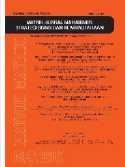

SINTA 2
DOI : https://doi.org/10.24843/MATRIK:JMBK.2022.v16.i02.p08
ABSTRACT
The income of Micro and Small Culinary Businesses in Banjarbaru in 2015-2019 has increased. Business development can be influenced by entrepreneurial competence and external factors. The purpose of this study was to analyze the effect of individual characteristics and psychological characteristics on entrepreneurial competence, the influence of entrepreneurial competence and external factors on business performance, and the influence of external factors on entrepreneurial competence. This research was conducted using a survey technique. The data analysis tool used SEM. The sample in this study was in the amount of 210. The method of data collection was done by direct interviews and google form through whatssapp respondents. The results of the study showed that entrepreneurs who were tenacious and had high motivation were going to have high entrepreneurial competence. Entrepreneurs having high technical ability had high business performance. Entrepreneurs having many social networks had high business performance. The conclusion of this study was that individual characteristics and psychological characteristics had a positive effect on entrepreneurial competence, whereas entrepreneurial competence and external factors had a positive effect on business performance.
Keywords: entrepreneurial competence, business performance, culinary
Pengaruh Kompetensi Wirausaha Terhadap Kinerja UKM Kuliner di Banjarbaru Kalimantan Selatan
ABSTRAK
Pendapatan Usaha Mikro dan Kecil bidang Kuliner di Banjarbaru pada tahun 2015-2019 mengalami peningkatan. Perkembangan usaha dapat dipengaruhi oleh kompetensi kewirausahan dan faktor eksternal. Tujuan penelitian ini adalah menganalisis pengaruh karakteristik individu dan karakteristik psikologi terhadap kompetensi kewirausahaan, pengaruh kompetensi kewirausahaan dan faktor eksternal terhadap kinerja usaha, dan pengaruh faktor eksternal terhadap kompetensi kewirausahaan. Penelitian ini dilakukan dengan menggunakan teknik survei. Alat analisis data menggunakan SEM. Sampel pada penelitian ini sebanyak 210. Metode pengumpulan data dilakukan dengan wawancara langsung dan google form melalui whatssapp responden. Hasil penelitian menunjukkan bahwa wirausaha yang ulet dan memiliki motivasi yang tinggi maka kompetensi kewirausahaan tinggi. Wirausaha yang memiliki kemampuan teknik yang tinggi maka kinerja usaha tinggi. Wirausaha yang memiliki jaringan sosial yang banyak maka kinerja usaha tinggi. Kesimpulan pada penelitian ini adalah karakteristik individu dan karakteristik psikologi berpengaruh positif terhadap kompetensi kewirausahaan, kompetensi kewirausahaan dan faktor eksternal berpengaruh positif terhadap kinerja usaha.
Kata kunci: kompetensi kewirausahaan, kinerja usaha, kuliner
INTRODUCTION
Micro and Small Enterprise is one of the drivers of the national economy, especially in Banjarbaru town. The distribution of the manufacturing sector to the GRDP of Banjarbaru town was 476.01 million rupiah in 2019. The food and beverage business is a potential business,
because the lifestyle of Banjarbaru residents tends to buy food outside the home rather than food at home. This opportunity is used by entrepreneurs in Banjarbaru town. The average income of Micro and Small Culinary Businesses in 2015 was IDR 18,973,384 per month. The average income of Micro and Small Businesses in the Banjarbaru Culinary field in 2019 was Rp. 27,764,186. Culinary businesses in Banjarbaru town can still survive even in a pandemic situation, forcing them to be less free to sell and promote products. Food and beverage vendors usually make large portions for their sales. MSME actors need a lot of customers to buy their products, so they can sell quickly. Food and beverage sellers using offline and online marketing systems are more crowded with customers. Food and beverage business actors only using an offline marketing system had less customers. Business actors making products available to customers more quickly tend to be more attractive to customers visiting the store. Customers do not have to queue too long to get the product. A large number of customers can finish a product faster than a store with a small number of customers. Based on this condition, it means that there are differences in the competence of business actors in managing the business, namely competence of business actors in the ability to make products and techniques to serve customers. This research is expected to be taken into consideration in setting policies for fostering and developing competitive food and beverage businesses in Banjarbaru City.
Entrepreneurial competence can improve business performance (Darya, 2012). The same results were also investigated by Pamela (2017) and Hasanah (2018) using the SEM method and showed the results that business competence had a positive and relevant effect on business success which was also a measure of business performance. Indicators of entrepreneurial competence include knowledge, skills and attitudes. Knowledge means that entrepreneurs make product innovations; the skills in question are finding and analyzing information, communication, building social networks and change management; whereas attitudes show that entrepreneurs are results oriented, negotiate and solve problems.
According to Kahan (2012), the components of entrepreneurship consist of technical competence, knowledge, skills and behavior. Technical competency includes managerial skill; knowledge competency includes conceptual ability; skill competency includes social skill; and behavioral competency include decision-making ability and time management skill. Internal factors have several indicators, namely entrepreneurial competence, financing resources, use of technology, and knowledge sharing on business success (Radzi et al, 2017). Sanchez's research (2012) proves that entrepreneurial competence has an important role in improving business performance. Sari (2016) used the SEM method. The results of the study explain that entrepreneurial competence has no effect on business performance. There are still differences in the results of previous studies investigating the effect of entrepreneurial competence on business performance. We address differences in research by presenting a conceptual model of the effect of competence on business performance.
This research follows the theory of Spencer (1993), describing that ability is measured through technical ability, relationship ability and customer service ability. This research used competency indicators in Christiana's (2014) research, namely technical ability financial ability and relationship ability as well as marketing ability, especially customer service ability. The novelty of this research is the parameter of technical ability, namely the ability of business actors to use social media in marketing, record sales via a computer or mobile phone, production and sales processes as well as food and beverage delivery online or offline.
Lans et al. (2014) stated that individual characteristics and psychological characteristics were included in the entrepreneurial characteristics which were internal factors. Individual characteristics are personal characteristics inherent in an entrepreneur from birth. Psychological characteristics are characters that are formed based on life experiences. Wickramaratne et al. (2014) examined 109 tea processing companies and found that the
background characteristics of business owners/managers had a direct impact on entrepreneurial competence.
Entrepreneurial competence has some indicators namely knowledge, skills and attitudes. This shows that SMEs can improve performance through the entrepreneurial competency of SMEs. The amount of knowledge, skills and good attitudes can improve performance. Sanchez's research (2011) shows that entrepreneurial competence has an important role in improving business performance. Abaho et al prove that entrepreneurial competence can increase sales, profits, market share in SMEs.
Aulia's research (2018) explains that government policies, the availability of inputs and social networks have a positive effect on the performance of SMEs. Jain (2011) explains that external factors have a positive influence on entrepreneurial competence. Indicators of external factors are social networks, government policies, socio-economic conditions in the surrounding environment, friends and family who help the business. The more support from external factors, the better the entrepreneurial competence. Entrepreneurs having wide social networks can help improve entrepreneurial competence. Entrepreneurs obtaining support from the government can also improve their entrepreneurial competency.
METHOD
The research was conducted in Banjarbaru Town, South Kalimantan Province, namely on Micro and Small Culinary Enterprises. Researchers only chose respondents that had telephone numbers so they were easy to contact and get data. However, if a respondent asked to fill out the questionnaire directly at home, then the questionnaire was filled out at the respondent's house. The number of samples in this study was in the amount of 210. The method of data collection in this study was carried out by direct interviews and asking questionnaires to respondents and google forms given via whatssapp respondents. Time of research was in February 2021. Data processing used a 5-point Likert scale.
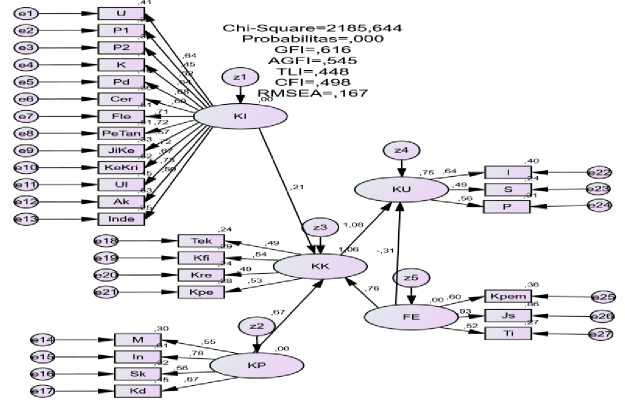
Figure 1. Evaluation Result of Initial SEM Model
The SEM model could be built in seven steps according to Firdaus and Farid (2008), namely the development of a theoretical model, development with a flow chart (path diagram), converting the flow chart into a structural equation, determining the input matrix and model estimation, determining several coefficient values on the values of the SEM model. Certain values (fix coefficient) and latent variables that had only one indicator variable were assigned
a value (generally one), and the evaluation of the goodness of fit criteria generally used was Chi-square, which was expected to be small, DF > 0 overidentified, GFI, AGFI.
This study used latent variables, namely business performance, external factors, individual characteristics and entrepreneurial competence. Manifest variables to measure individual characteristics were age, experience, education and cosmopolitan. Manifest variables of entrepreneurial competence were knowledge, abilities and skills. Meanwhile, External Factors had several indicators, namely social network, government policy and the availability of input. The manifest variables to measure performance were the number of receipts, the number of sales, and the amount of profit, and marketing reach.
Chi-square was still high and the probability was still 0 in the initial model. Therefore, to reduce the Chi-square and make the probability increased to > 0.05, the variables having a loading factor value of < 0.5 needed to be removed. In addition, variables having a large number of covariance relationships needed to be removed and the covariances having the largest values needed to be linked. The overall model fit test showed that there were seven GOF measures with good fit, so it can be concluded that the model in this study had a relatively good fit, as seen in the table below.
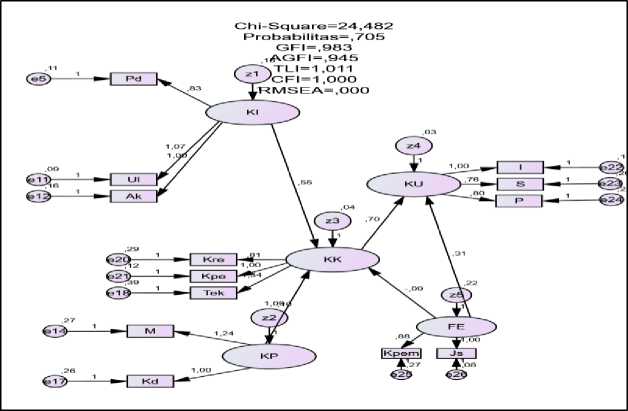
Figure 2. Evaluation Result of SEM Model Respecification
Table 1. GOF test results on the specification of the SEM Model
|
GOF |
Acceptable Fitness Level |
Result |
Description |
|
Chi square |
< 42,556 |
24,482 |
Good |
|
Probabilitas |
≥ 0,05 |
0,705 |
Good |
|
DF |
>0 |
29 |
Over Identified |
|
GFI |
GFI ≥ 0,90 good, |
0,983 |
Good |
|
AGFI |
AGFI ≥ 0,90 good, |
0,945 |
Good |
|
TLI |
TLI ≥ 0,95 good |
1,011 |
Good |
|
CMIN/DF |
≤ 2,0 |
0,844 |
Good |
Source: Processed primer data, 2021
Validity was measuring the variables those were needed to measure (Cooper and Pamela 2006). If the t-count was greater than the t-table (2.064) on a df of 24 with an alpha of 0.05, then the variable was declared valid. All latent variables had CR and VE values
supporting good reliability because construct reliability (CR) was of 0.50 and variance extracted (VE) was of 0.50.
|
Table 2. Regression Weight | |||||||||
|
Variable |
Estimate |
S.E. |
C.R. |
P Description | |||||
|
KK |
÷ |
KI |
0,622 |
0,212 |
2,933 |
0,003 |
Valid | ||
|
KK |
÷ |
KP |
1,111 |
0,224 |
4,954 |
*** |
Valid | ||
|
KK |
÷ |
FE |
-0,185 |
0,253 |
-0,731 |
0,465 Not valid | |||
|
KU |
÷ |
KK |
0,747 |
0,129 |
5,798 |
*** |
Valid | ||
|
KU |
÷ |
FE |
0,301 |
0,133 |
2,273 |
0,023 |
Valid | ||
|
Ak |
÷ |
KI |
1,000 | ||||||
|
Ul |
÷ |
KI |
1,082 |
0,230 |
4,709 |
*** |
Valid | ||
|
Pd |
÷ |
KI |
0,831 |
0,166 |
5,001 |
*** |
Valid | ||
|
Kd |
÷ |
KP |
1,000 | ||||||
|
M |
÷ |
KP |
1,480 |
0,718 |
2,062 |
0,039 |
Valid | ||
|
Kpe |
÷ |
KK |
1,000 | ||||||
|
Kre |
÷ |
KK |
0,824 |
0,142 |
5,791 |
*** |
Valid | ||
|
I |
÷ |
KU |
1,000 | ||||||
|
S |
÷ |
KU |
0,759 |
0,097 |
7,863 |
*** |
Valid | ||
|
P |
÷ |
KU |
0,818 |
0,102 |
8,029 |
*** |
Valid | ||
|
Js |
÷ |
FE |
1,000 | ||||||
|
Kpem |
÷ |
FE |
1,012 |
0,145 |
6,987 |
*** |
Valid | ||
|
Tek |
÷ |
KK |
1,325 |
0,223 |
5,952 |
*** |
Valid | ||
|
Source: Proccessed primer data, 2021 | |||||||||
|
Table 3. Reliability | |||||||||
|
Variable |
AVE |
CR |
Description | ||||||
|
KI |
0,5 |
0,8 |
Reliable | ||||||
|
KP |
0,4 |
0,7 |
Reliable | ||||||
|
KK |
0,6 |
0,8 |
Reliable | ||||||
|
FE |
0,3 |
0,5 |
Not Reliable | ||||||
|
KU |
0,4 |
0,7 |
Realible | ||||||
|
Source: Proccessed primer data, 2021 | |||||||||
RESULTS AND DISCUSSION
This study used 210 Culinary SMEs respondents in Banjarbaru town. The criteria required to be a respondent were that the Culinary SMEs actors were managers and owners of Culinary SMEs. The next criterion is that Culinary SMEs activities had been running for at least 1 year. Culinary SMEs in Banjarbaru town were dominated by female entrepreneurs. They were housewives helping their husbands in increasing their income for their daily needs. Male entrepreneurs were by 39 percent and female entrepreneurs were by 61 percent. Women entrepreneurs traded as well as filled their spare time after taking care of the household. Male entrepreneurs were company’s employees and civil servants who worked in the morning and selled in the afternoon.
Individual Characteristics (KI) had a positive and significant effect on entrepreneurial competence (KK), so hypothesis H1 was accepted. Entrepreneurial competence in Culinary SMEs in Banjarbaru town was significantly influenced by individual characteristics with a positive factor load value (γ= 0.51). Therefore, the better or higher the individual characteristics of the entrepreneur, the more competent the entrepreneur.
Individual characteristic indicator (KI) with the greatest positive effect was ductility (Ul) with a factor load value (β=0.81). The tenacity indicator was the indicator contributing the most to the improvement of individual characteristics. The more tenacious entrepreneurs were, the more they would increase their entrepreneurial competency and improve business performance. The more tenacious the entrepreneur was, the more successful his business would be.
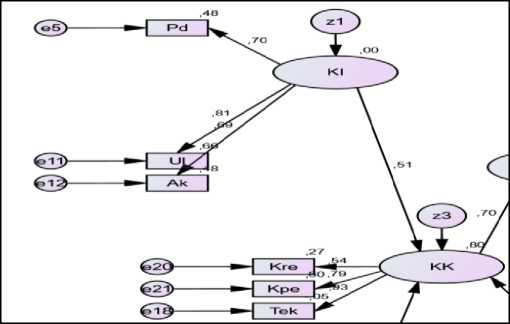
Figure 3. Path Diagram of the Effect of Individual Characteristics on Entrepreneurial Competence
The ductile variable was the variable that best represented the latent variable of individual characteristics. The technical ability variable was the variable that best represented the latent variable of entrepreneurial competence. This means that tenacious business actors had better technical skills in the culinary business in Banjarbaru. Business actors having high tenacity and high technical ability tended to open store on time and activate sales platforms on gofood, maxim and grab at the same time as store opening. Therefore, when there was no order in the store, many orders woud be obtained from online applications. When there were many orders in direct stores and online applications, buyers would complete orders quickly, not only prioritizing online orders, but also completing orders in stores at the same time.
Respondents were tenacious in promoting interesting products on social media. Respondents always promoted their products on social media 2 hours before the store opens. When respondents prepared selling commodities such as preparing ingredients and cooking, respondents also shared photos of products available on the day of sale on social media. Respondents also often checked orders in the marketplace, grab, gofood, and maxim to make sure all orders had been done and given to customers. Respondents also spread information on their social media when their commodities sold out that day and would reopen the next day. Therefore, when the customer wanted to buy when the store was about to close, the customer couldnot order and the customer was notified that the customer could order again for the next day.
Respondents only shared information about how to make products to production employees, and even then the ingredients used were not informed. Respondents had prepared the spices and the dough before the employees came to the shop. Therefore, employees only steamed or fried the product. For example, the owner of a bread business only sent the bread dough to the shop, then the shop employee baked the bread. The owner of the cappuccino grass jelly, Thai tea, and miltie bubble drinks also did not tell the employees the brand of the powdered drink. Beverage business owners always prepared powdered drinks in small packets
for a dose of 1 cup of drink. Therefore, employees just mixed the powdered drink with some ingredients and the drink was ready to be served.
This is in accordance with the results of research by Sari (2016), and Islam (2011), that to increase entrepreneurial competence, the individual characteristics of entrepreneurs also need to be strengthened. Individual characteristics that show entrepreneurial competence is perseverance (tenacity). Successful entrepreneurs are entrepreneurs having strong personality traits such as perseverance (tenacity).
Psychological characteristics had a positive and significant effect on entrepreneurial competence, so hypothesis H2 was accepted. Entrepreneurial competence in Culinary SMEs in Banjarbaru town was significantly influenced by psychological characteristics with a positive factor load value (γ = 0.80). Psychological characteristics had a direct influence on entrepreneurial competence which was greater than individual characteristics on entrepreneurial competence. Therefore, the better or higher the characteristics of entrepreneurial psychology, the higher the entrepreneurial competence. This is in accordance with the research results of Sarwoko et al. (2013), which illustrates that the higher the psychological characteristics, the higher the competence of business actors. Accordingly, to improve entrepreneurial competence, the psychological characteristics of entrepreneurs need to be strengthened.
The indicator of psychological characteristics having the greatest positive influence on the latent variable of psychological characteristics was motive (M), with a factor load value (β=0.59). This shows that the motive indicator was the indicator contributing the most to the improvement of individual characteristics. Entrepreneurs having high motivation would affect their entrepreneurial mindset and competence and improve business performance. The more entrepreneurs had a high motivation, the more successful their business would be.
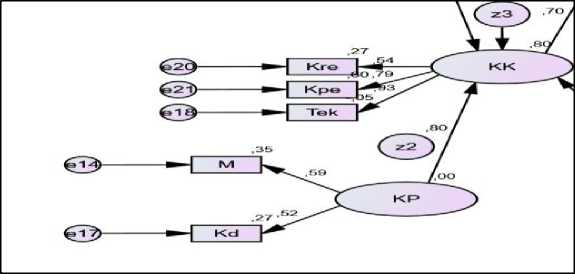
Figure 4. Path Diagram of the Effect of Psychological Characteristics on Entrepreneurial Competence
The motivation variable was the variable best representing the latent variable of psychological characteristics. The technical ability variable was the variable best representing the latent variable of entrepreneurial competence. Culinary business owners in Banjarbaru town having high motivation could improve their technical skills. Respondents had a hobby of cooking, in order to help their family's economy, would sell food or drinks. Because respondents were motivated to help their family's economy, they actively sought information about how to promote products on the internet in order to get more orders.
Respondents continued to sell even on day off or weekends, because on day off or weekends, they would get more customers than usual days. Respondents always made good use of their time. Respondents sold not only in stores, but also in online applications.
Respondents thought that it was better to open a store to get a lot of money than a closed store, so they opened a store and activated their selling platform in an online application.
Respondents also already had a budget for their sales and a sales quota. In one day, they had to cover the budget so as not to suffer losses. Respondents usually promoted products that had not been sold out on social media. They told the number of food and drinks that had not been purchased on whatsapp status. Usually, there were several customers who responded and immediately bought all the food and drinks that had not been sold, so that all products were sold.
Respondents also had an honest nature with customers. Respondents would tell customers if the order being delivered would take a long time due to a problem with the stove or certain things. The owner of the beverage business was also honest that the powder taste of the drink ordered by the customer was old and hardened, then recommended changing the taste of the drink ordered. Respondents also told customers that the food seasoning was cooked first, so it was safe for consumption and made customers believed about the safety of consuming the food. Respondents were also honest in terms of the details of the price of food and drinks purchased by customers.
The result is the same as the results of research (Aulia, 2018), that the motivation variable is the most representative of psychological characteristics. Entrepreneurial competence can be increased through motivation . Motivation has a positive influence on all aspects, including technical competence and relations. The motivation of business actors can improve one's abilities. Business actors develop their abilities through high motivation, while business actors with low abilities have low motivation (Logan, et al, 2011). Sumantri's research (2013) explains that motivation and self-control can help one's abilities. Roblesa and Rodrigueza (2015) explain that self-control is included in 20 dimensions of entrepreneurial competence. Self-control is self-regulation and entrepreneurs know their own limits (Roblesa and Rodrigueza, 2015).
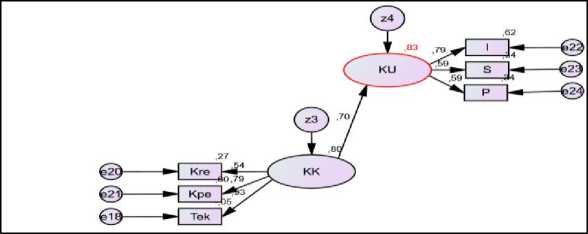
Figure 5. Path Diagram of the Effect of Entrepreneurial Competence on Business Performance
Business performance in Culinary SMEs in Banjarbaru town was significantly influenced by entrepreneurial competence with a positive factor load value (γ= 0.70). The indicator of entrepreneurial competence having the greatest positive influence on the latent variable of entrepreneurial competence was technical ability (Tech) with a factor load value (β=0.93). This shows that the technical ability indicator was the indicator contributing the most to improving business performance. Entrepreneurs having high technical ability would improve business performance. The better the technical ability, the more successful the business would be.
The technical ability was the variable best representing the latent variable of entrepreneurial competence. The acceptance variable was the variable best representing the
latent variable of business performance. This means that the higher the technical ability, the higher the acceptance received by the culinary business owner in Banjarbaru town.
Respondents used social media in marketing techniques. Respondents shared photos of attractive products and were labeled with product brands in the photos. For example, another culinary seller of the same kind wanted to promote a similar product and display product photos on the internet, so this other culinary seller could not share product photos with product photos that had been labeled with the brand. They had to use their own product photos. Respondents also shared the same photos on grab, gofood, maxim, marketplace, and social media, so that customers would remember that there were characteristics of product photos from the owner of the culinary business they subscribed to.
The delivery of food and drinks through online couriers, which usually offered services on social media, was very helpful for respondents in completing orders. Some respondents had lost customers who ordered at the store because their orders were slow to complete. These customers did not buy food and drinks. Respondents had to balance the handling of orders instore and online. If they could handle orders quickly in stores or online, respondents would receive more acceptance. Respondents only shared information on how to make products to production employees, and even then the ingredients used were not informed. Respondents did not reveal the seasoning because they wanted to keep the recipe for food or drink secret, so that no one could imitate the product.
This is in accordance with research concluding that business performance was related to entrepreneurial competence. Entrepreneurship competence had a direct influence on business performance that was greater than external factors on business performance. If the entrepreneurial competence possessed by entrepreneurs was high, then business performance would also be higher. Suryana (2014) explains that to measure entrepreneurial competence, there are 4 centers of ability needed for business success, namely technical competence, marketing ability, financial ability and relationship ability. Entrepreneurs who are able to make business plans by delivering products to customers well such as how to use social media, serve customers in a friendly manner, build good relationships with suppliers or the community, create a budget, will experience an increase in sales.
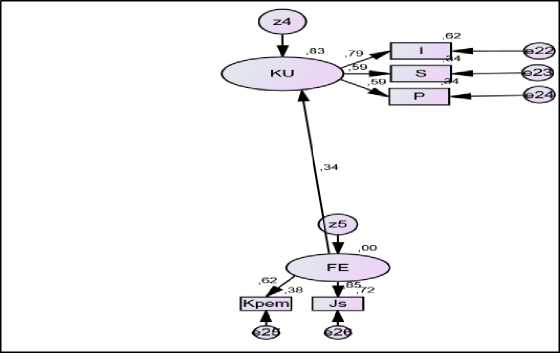
Figure 6. Path diagram of the influence of external factors on business performance
Business performance at Culinary SMEs in Banjarbaru town was significantly influenced by external factors with a positive factor load value (γ= 0.34). The external factor indicator that had the greatest positive influence on the latent variable of external factors was social network (Js) with a factor load value (β=0.85). This shows that this indicator was the
indicator contributing the most to improving business performance. Entrepreneurs having a lot of social networks would improve business performance. The higher the social network, the more successful the business.
The social network was the variable best representing the latent variable of external factors. The acceptance variable was the variable best representing the latent variable of business performance. This means that the wider the social network, the higher the acceptance of the culinary business owner in Banjarbaru town. Respondents joining culinary groups as a place to sell would have a lot of income. Respondents joined several culinary groups to increase sales. The Banjarbaru Culinary Group provided an example of how to post an ad with good photos and clear ad sentences.
Respondents received training to make good packaging, trade online, penetrate the export market, bazaar information. Nearby culinary influencers also bought and promoted respondents' commodities. Respondents also liked to attend recitations, family gatherings, complex social gatherings. Usually, in these events, they got orders for the products they sold. There were also respondents becoming their own drivers and joined the gofood and grabfood groups to get orders from customers more and more easily, without the need to look for other drivers.
This is in accordance with Aulia's research (2020), explaining that government assistance and social networks have a positive effect on business performance. Accordingly, the higher the encouragement from external factors, the more it would improve business performance. Social networks have an influence on business performance, because a business requires other people in the process, both buyers and suppliers. The existence of social networks can help entrepreneurs find buyers, suppliers, or people who have expertise in their fields (Kinerja et al., 2019).
External factors had no effect on entrepreneurial competence, so hypothesis H5 was rejected. Entrepreneurial competence in Culinary SMEs in Banjarbaru town was influenced by external factors with a negative factor load value (γ= -0.10). The external factor indicator having the greatest positive influence on the latent variable of external factors was social network (Js) with a factor load value (β=0.85).

Figure 7. Path Diagram of the Effect of External Factors on Entrepreneurial Competence
The technical ability was the variable best representing the latent variable of entrepreneurial competence. The social network was the variable best representing the latent variable of external factors. In the results of the SEM analysis, the results showed that external factors had no effect on entrepreneurial competence. External factors did not help in increasing entrepreneurial competence. External factors only helped improving business performance. Respondents thought that, within the groups they joined, they found examples of how to post good product photos. However, they were not told how to make good photos. They searched the internet for good photo editing themselves. In addition, they were also given training on
packaging making and photo examples of good or bad packaging. Business actors ordered packaging on online shopping sites and at packaging printing places. Social networks like family helped them in selling and taking orders online. People and friends also helped buying their commodities.
This research is different from the research of Aulia Reza (2018). The results of this study indicated that external factors had no effect on entrepreneurial competence because the training provided was usually only material and not practiced directly. The government only helped in sales, which were usually in the form of bazaar facilities for culinary festivals or cake markets during Ramadan and providing online sales platforms such as the Banjarbaru culinary group.
CONCLUSION
Higher individual characteristics would increase the entrepreneurial competence of the Culinary SMEs of Banjarbaru town. The manifest variable of individual characteristics having the greatest reflection was tenacity. Better psychological characteristics would increase entrepreneurial competence. Psychological characteristics had a greater influence on entrepreneurial competence than the influence of individual characteristics on entrepreneurial competence. Consequently, the higher the psychological characteristics, the higher the entrepreneurial competence of the Culinary SMEs of Banjarbaru town. The manifest variable of psychological characteristics having the greatest reflection was motive.
Entrepreneurship competence would improve business performance. Entrepreneurial competence had a greater influence on business performance than the influence of external factors on business performance. Accordingly, the higher the entrepreneurial competence, the higher the business performance. The manifest variable of entrepreneurial competence having the greatest reflection was technical ability.
The encouragement from external factors would improve business performance. The manifest variable of external factors having the greatest reflection was social network. External factors had no effect on entrepreneurial competence. External factors did not help in increasing entrepreneurial competence. External factors only helped improving business performance. Social network such as family helped entrepreneurs sold and took orders online. People and friends helped buying their commodities. The government only helped in sales, usually in the form of bazaar facilities for culinary festivals or cake markets during Ramadan and providing online sales platforms such as the Banjarbaru culinary group.
The technical abilities possessed by culinary business owners in Banjarbaru town were the competencies best reflecting entrepreneurial competency. Therefore, the competence that needed to be improved was the technical ability of the culinary business owner in Banjarbaru town. The technical ability of business owners could be improved by increasing entrepreneurial activity in finding information about online marketing, payment, sales and product delivery techniques. Online marketing, sales and product delivery techniques could help business owners got more customers. Culinary business owners in Banjarbaru town needed to respond more quickly and served customers if someone asked for a product on social media, without waiting for their family to order the product. In addition, business owners also needed to deliver products and made payments online, so they didn't lose customers. In addition, culinary business owners in the city of Banjarbaru were advised to keep food and drink recipes secret, so that no one duplicated the food and drinks sold.
Product promotion techniques carried out by culinary business owners in Banjarbaru town were dominantly still relatively unattractive. Unattractive product promotions, such as only stating the product name and price without including product photos in the Banjarbaru culinary facebook group. Culinary business owners in Banjarbaru town were advised to do
product promotions by showing attractive product photos, as well as complete information such as product names, product prices and numbers that could be contacted if there were customers who wanted to order their products. Culinary business owners could also create Instagram or their respective websites specifically for product promotion, so that culinary business owners knew which products were more attractive to customers.
Business owners were advised to join groups on social media and in the community directly related to their efforts to improve business performance. The government took a role by creating culinary groups and inviting business actors to discuss in groups about culinary businesses. The government could cooperate with online application companies on how to enter the product wanted to sell in the application, payment techniques through the application, disbursement of money in the application to the bank account of the culinary business owner in Banjarbaru town, and how to order a courier to deliver products to customers only with the application. The government could also provide training on making Instagram and websites for culinary business owners.
REFERENCES
Aulia, M. R. (2018). Pengaruh Kompetensi Kewirausahaan Terhadap Kinerja Usaha Kedai Kopi Skala Mikro dan Kecil di Kota Bogor. Thesis. Sekolah Pascasarjana IPB.
Christiana. (2014). Pengaruh Kompetensi Wirausaha, Pembinan Usaha dan Inovasi Produk Terhadap Perkembangan Usaha. Diponegoro Journal of Social and Politic, 1-10.
Gusti, I., Darya P., & Madani, S (2012). Pengaruh Ketidakpastian Lingkungan dan
Karakteristik Kewirausahaan Terhadap Kompetensi Usaha dan Kinerja Usaha Mikro Kecil di Kota Balikpapan. Jurnal Inovasi dan Kewirausahaan, 1(1), 65-78.
Jain, R. (2011). Entrepreneurial Competencies: A Meta-analysis and Comprehensive Conceptualization for Future Research. Journal of Business Perspective. https://doi.org/10.1177/097226291101500205
Logan, S., Medford, E., & Hughes, N. (2011). The Importance of intrinsic motivation for high and low ability readers reading comprehension performance. https://doi.org/10.1016/j.lindif.2010.09.011
Maad. (2019). Entrepreneurial Competencies of the Household Industries of Local Food in Bogor District West Java. Indonesian Journal of Social Research (IJSR). https://doi.org/10.30997/ijsr.v1i1.28.
Monica, M., & Widjaja, H. (2019). Pengaruh Dukungan Publik, Kelembagaan, Jaringan sosial, Bisnis, dan Kepribadian Terhadap Kinerja Kewirausahaan. Jurnal Manajerial dan Kewirausahaan UNTAR, Volume I No. 4/2019 hal 748-758.
Pramaishella. (2016). Pengaruh Modal, Dukungan Pemerintah, dan Kompetensi Sumber daya Manusia terhadap Kinerja Usaha Mikro, Kecil dan Menengah. Jurnal Ekonomi Universitas Muhammadiyah Jember.
Radzi, K.M., Nor, M. N. M., & Ali, S. M. (2017). The Impact of Internal Factors on Small Business Success: A Case of Small Enterprises under the Felda Scheme. Asian Academy of Management Jornal. 22(1): 27-55. https://doi.org./10.21315/aamj2017.22.1.2
Robles, L., & Rodriguez. (2015). Key Competencies for Entrepreneurship. Procedia Economics and Finance. https://doi.org/10.1016/S2212-5671(15)00389-5
Sanchez. (2011). The Influence of Entrepreneural Competencies on Small Firm Performance. Revista Latinamericana de Psicologia, 44(2), 165-177.
Sarwoko, E., Surachman, Armanu, & Hadiwidjojo, D. J. (2013). Entrepreneurial Characteristics and Competency as Determinants of Business Performance in SMEs. IOSR Journal of Business and Management (IOSR-JBM), 7(3), 31-38.
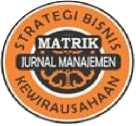
Discussion and feedback